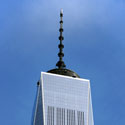Filter by
You must be a CTBUH Member to view this resource.
Nanjing Olympic Suning Tower
Nanjing Tower
Building
On Hold
residential / hotel / office
steel/concrete
400.0 m / 1,312 ft
88
5
1828
46
226,000 m² / 2,432,644 ft²
Usually takes on the balance of the architectural effort not executed by the "Design Architect," typically responsible for the construction documents, conforming to local codes, etc. May often be referred to as "Executive," "Associate," or "Local" Architect, however, for consistency CTBUH uses the term "Architect of Record" exclusively.
The Design Engineer is usually involved in the front end design, typically taking the leadership role in the Schematic Design and Design Development, and then a monitoring role through the CD and CA phases.
The Design Engineer is usually involved in the front end design, typically taking the leadership role in the Schematic Design and Design Development, and then a monitoring role through the CD and CA phases.
Other Consultant refers to other organizations which provided significant consultation services for a building project (e.g. wind consultants, environmental consultants, fire and life safety consultants, etc).
You must be a CTBUH Member to view this resource.
Usually involved in the front end design, with a "typical" condition being that of a leadership role through either Schematic Design or Design Development, and then a monitoring role through the CD and CA phases.
Usually takes on the balance of the architectural effort not executed by the "Design Architect," typically responsible for the construction documents, conforming to local codes, etc. May often be referred to as "Executive," "Associate," or "Local" Architect, however, for consistency CTBUH uses the term "Architect of Record" exclusively.
The Design Engineer is usually involved in the front end design, typically taking the leadership role in the Schematic Design and Design Development, and then a monitoring role through the CD and CA phases.
The Design Engineer is usually involved in the front end design, typically taking the leadership role in the Schematic Design and Design Development, and then a monitoring role through the CD and CA phases.
Other Consultant refers to other organizations which provided significant consultation services for a building project (e.g. wind consultants, environmental consultants, fire and life safety consultants, etc).
Material Supplier refers to organizations which supplied significant systems/materials for a building project (e.g. elevator suppliers, facade suppliers, etc).
Skybridges Research Team Visits Major Projects in China, Malaysia
31 July 2019 - Event
Height & Data Committee Meets at 2018 Middle East Conference
20 October 2018 - Event

11 June 2013 | Nanjing
City-Scapes: Transformations + Interventions
In our journey from Chicago to New York, the United States, South Africa, Europe, the Mideast to Asia/China, the tall building has always been tied...

27 January 2012
Debating Tall: A Supertall Future in the US?
Adrian Smith, Adrian Smith + Gordon Gill Architecture; Paul Beitler, Beitler Real Estate Services LLC
In 1990, only 11 buildings in the world could be counted as a “supertall” (defined as a building over 300 meters tall), and all but...

11 June 2013 | Nanjing
City-Scapes: Transformations + Interventions
In our journey from Chicago to New York, the United States, South Africa, Europe, the Mideast to Asia/China, the tall building has always been tied...

18 October 2012 | Nanjing
Lynn S. Beedle Lifetime Achievement Award: Archi-neering Tall
Never predictable, never simplistic, Helmut Jahn has developed a complex portfolio of iconic buildings around the world. Standout projects include the Sony Center in Berlin,...

19 September 2012 | Nanjing
Innovative and Sustainable High-Rise Façade Systems in Asia
The variety of architectural ideas, the need to save energy and the specific demands of high-rise construction, different locations, locally available construction techniques and climate...
31 July 2019
Three researchers from the CTBUH Skybridges Research Team visited four key skybridge-linked projects in Shenzhen, Chongqing, Beijing, and Kuala Lumpur.
20 October 2018
The CTBUH Height and Data Committee met to discuss several key definitions of structural types, as well as some urban-scale considerations.
7 December 2017
The founder of the CTBUH, Dr. Lynn Beedle, a professor and eventually director of the Fritz Engineering Laboratory at Lehigh University, would have been 100 years old on December 7.
5 July 2017
CTBUH Singapore, in coordination with CTBUH Malaysia and CTBUH Thailand, hosted a multi-city seminar on sustainable design in Singapore, Kuala Lumpur, and Bangkok.
21 July 2016
CTBUH Malaysia held its inaugural event in the Malaysian Petroleum Club at Petronas Towers, kindly supported by KLCC and Turner International Malaysia.
10 September 2014
Progress is being made on the Composite Megacolumns research project, with a case study and laboratories selected for the destructive tests
18 October 2012
Never predictable, never simplistic, Helmut Jahn has developed a complex portfolio of iconic buildings around the world. Standout projects include the Sony Center in Berlin, Xerox Center in Chicago, Liberty Place in Philadelphia and the MGM Veer Towers in Las Vegas. Once defined as a modernist, he broke away from rigid labels to create his own blends of efficient structures, paving the way for a new era of sustainable buildings.
Subscribe below to receive periodic updates from CTBUH on the latest Tall Building and Urban news and CTBUH initiatives, including our monthly newsletter. Fields with a red asterisk (*) next to them are required.
View our privacy policy